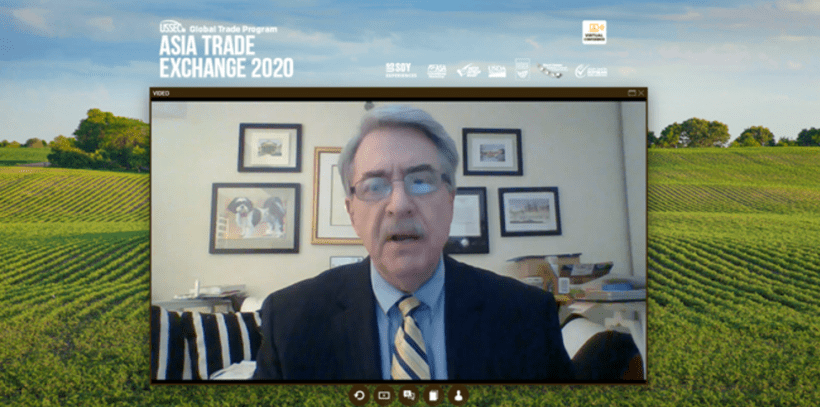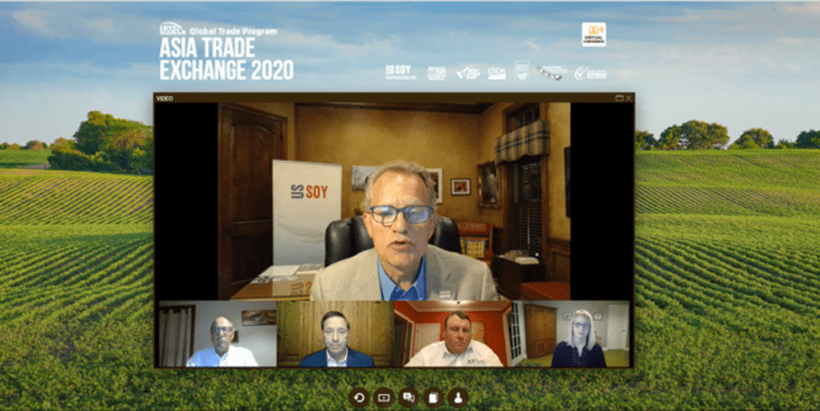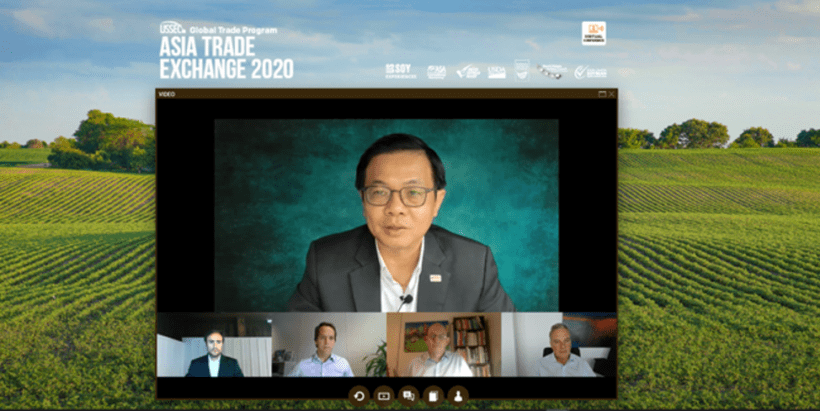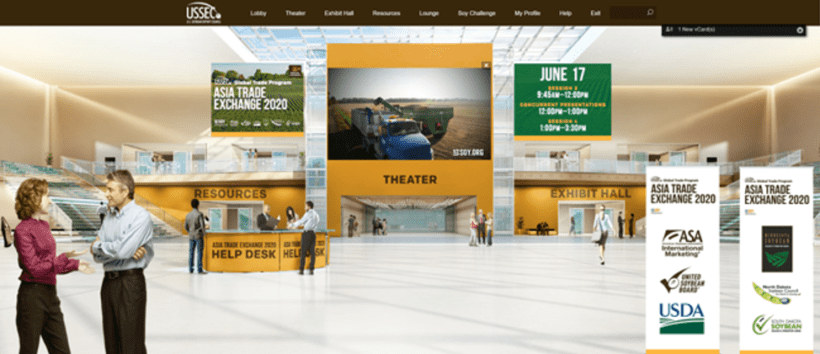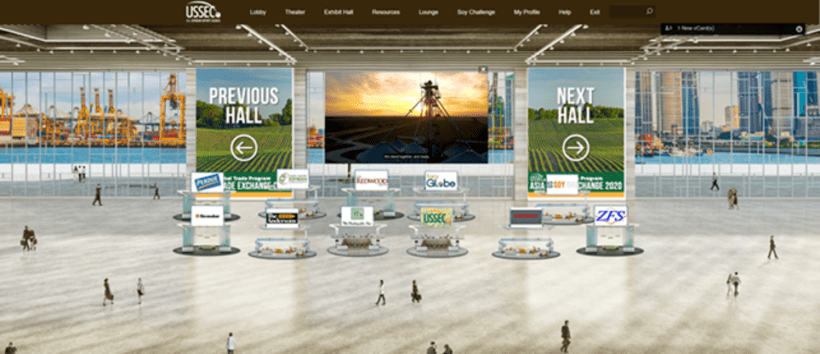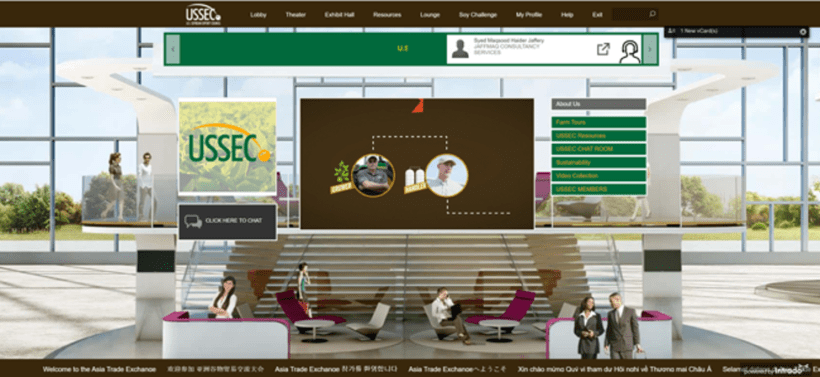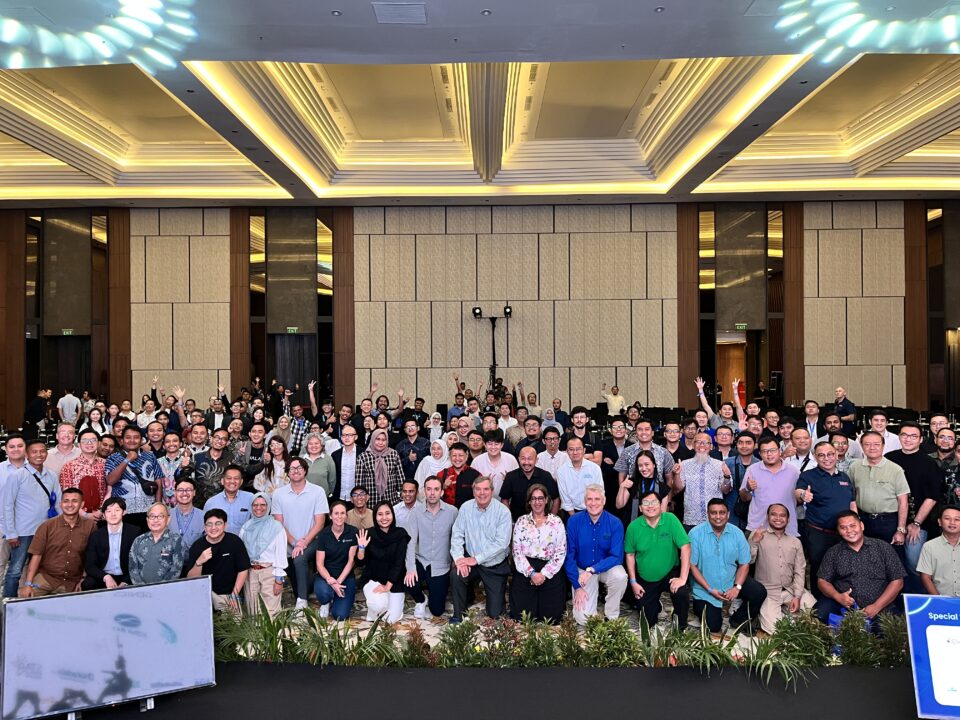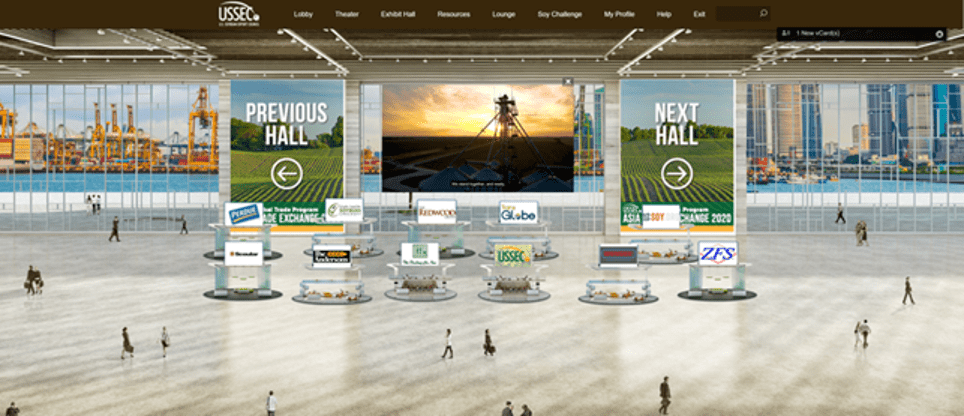
USSEC hosted the 2nd Asia Trade Exchange 2020 digital conference from June 15 to 17. Expanding on the objective of the first Asia Trade Exchange which was held in Bangkok, Thailand in May 2019, this event again served to provide opportunities to connect buyers from Southeast Asia and South Asia (previously Asia Subcontinent) with U.S. exporters and U.S. soy grower leaders. This year’s virtual installment was special as it expanded its reach to also include participants from China, Taiwan, Hong Kong, Japan, and Korea.
Over 830 customers and soybean industry representatives from more than 25 countries including Australia, Bangladesh, China, India, Indonesia, Japan, Republic of Korea, Malaysia, Myanmar, Nepal, Pakistan, Philippines, Singapore, Sri Lanka, Taiwan, Thailand, United Kingdom, United States, and Vietnam participated in the three-day event.
The multi-regional buyers’ conference included a workshop session on June 15 to provide participants with a better understanding of the U.S. grain inspection process and protocols, practical applications, and price risk management as well as basics of animal nutrition and feed formulation for non-technicians.
Over the next two days, participants attended presentations and panel sessions that covered topics such as the quality of the U.S. soy crop, the global soy protein outlook, sustainable production, and transportation, and gained a deeper appreciate of the U.S. Soy Advantage, sustainability, and the impact of African Swine Fever (ASF) and COVID-19 and their overall impact on the feed and livestock industry and beyond.
Guest of honor U.S. Secretary of Agriculture Sonny Perdue delivered a welcome address on June 16 and Ted McKinney, Under Secretary for Trade and Foreign Agricultural Affairs, gave a live address and participated in a dialogue session with USSEC CEO Jim Sutter on June 17.
Sutter, during his U.S. Soy Advantage presentation, remarked that the Asia region is very important and U.S. soybean farmers greatly value the relationships that had been built over many years working together. “The value of our partnerships is immeasurable and something that helps us differentiate the U.S. Soy Advantage for our customers,” he said.
Doug Winter, Vice Chairman of USSEC and United Soybean Board (USB) Director, and Casey Youngerman, American Soybean Association (ASA) director, provided U.S. growers’ perspectives on U.S. soybean crop outlook and sustainable farm practices. They also participated in a U.S. Soy Advantage panel session.
USSEC consultant Gonzalo Mateos, professor of animal sciences at the University of Madrid, gave a presentation, “Influence of the Origin of the Beans on Chemical Composition and Nutritive Value of Commercial Soybean Meals” from an ongoing study that began in 2005. The most recent finding concluded that differences in nutritive value of soybean meal depends not only on the processing conditions during the crushing process but also on the origin of the beans. At similar crude protein content, the nutrition value of meal processed from U.S. beans is higher compared to other origins; and when compared to soybean meal with a higher crude protein from other origins, U.S. soybean meal displays excellent nutritional value as it contains lower fiber and higher sucrose, P, and indispensable amino acids per unit protein as a result of its intrinsic value.
In addition to the presentations and live question and answer panel sessions, the event also incorporated a networking session where participants could interact with 30 U.S. soy exporters and industry members that each had their own virtual booths. The participants could engage in group chats in the lounge or have private messaging and chats with members of the U.S. soy family.
Based on the event survey conducted at the end of the conference, 90% or more of the respondents agreed or strongly agreed that the content was relevant, that the event included valuable new information and was a good use of their time, they learned useful information about U.S. Soy for their business, and why purchasing / using U.S. Soy is profitable for their business. The majority of the participants also felt that the networking / interaction feature was useful as 80% agreed or strongly agreed that they were able to generate new contacts.
Southeast Asia
More than 330 participants from Southeast Asia including representatives from 181 companies, FAS-USDA, and USSEC representatives participated in the virtual event.
According to post-event feedback received, the majority of participants rated the contents and speakers highly, saying that the topics covered provided valuable insights and were very relevant to their businesses. Many of them were also impressed with the platform which simulated a live conference and exhibition environment which included the ability to network with existing and new suppliers via the messaging and chat functions available.
According to Timothy Loh, USSEC Regional Director – Southeast Asia’s, the region’s population of more than 670 million makes up about 8% of the world’s population and is estimated to grow at 1% annually. Many Southeast Asia countries are reliant on imports for its feed and food ingredients. ASF, which affected the region in 2019, and COVID-19 have recently taken a toll on the region’s feed industry. The sector, which was previously growing at a pace of 4% to 6% annually, will likely see the region’s projected annual feed production in 2020 return to its 2018 level at 86.5 million metric tons (MMT).

